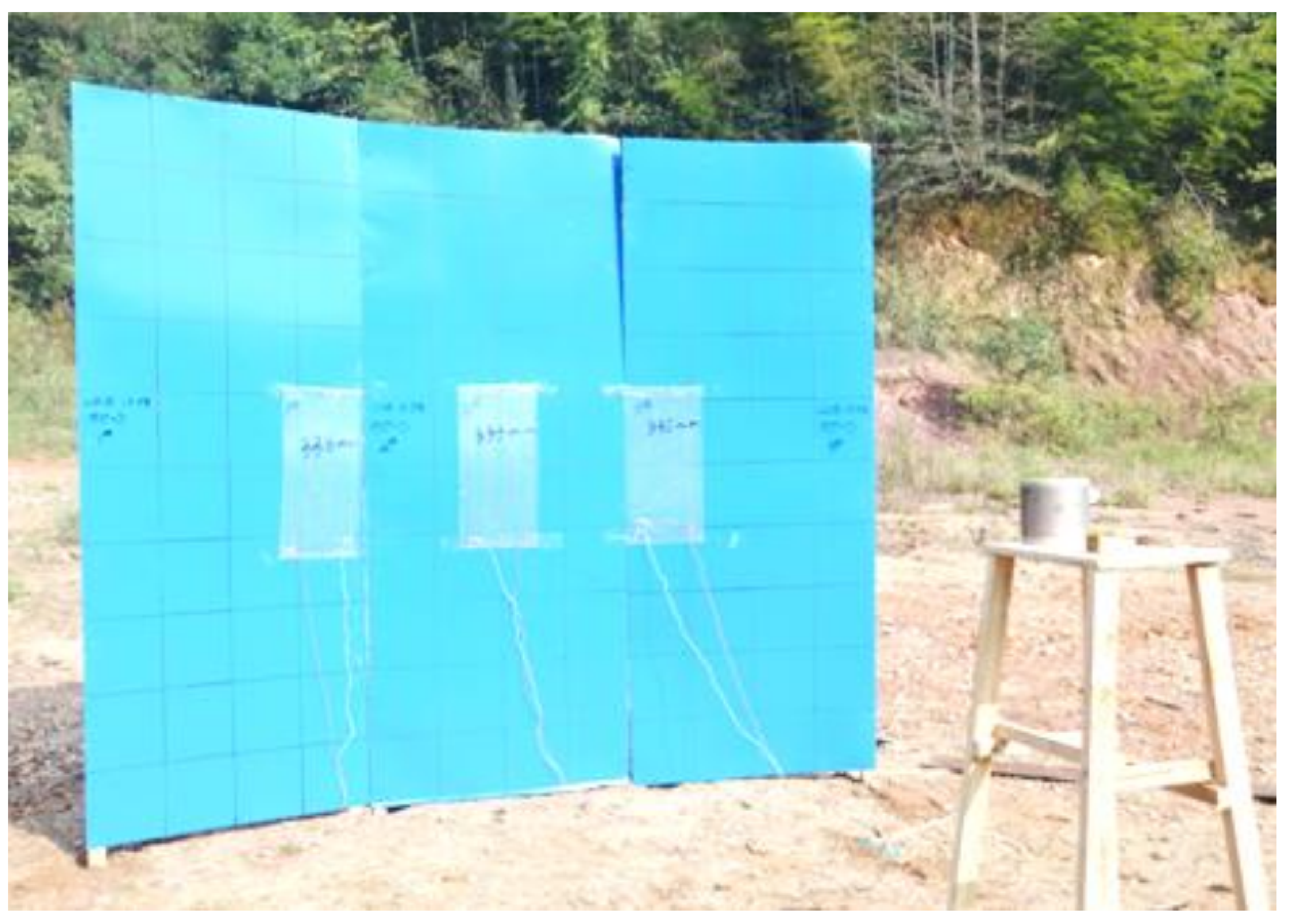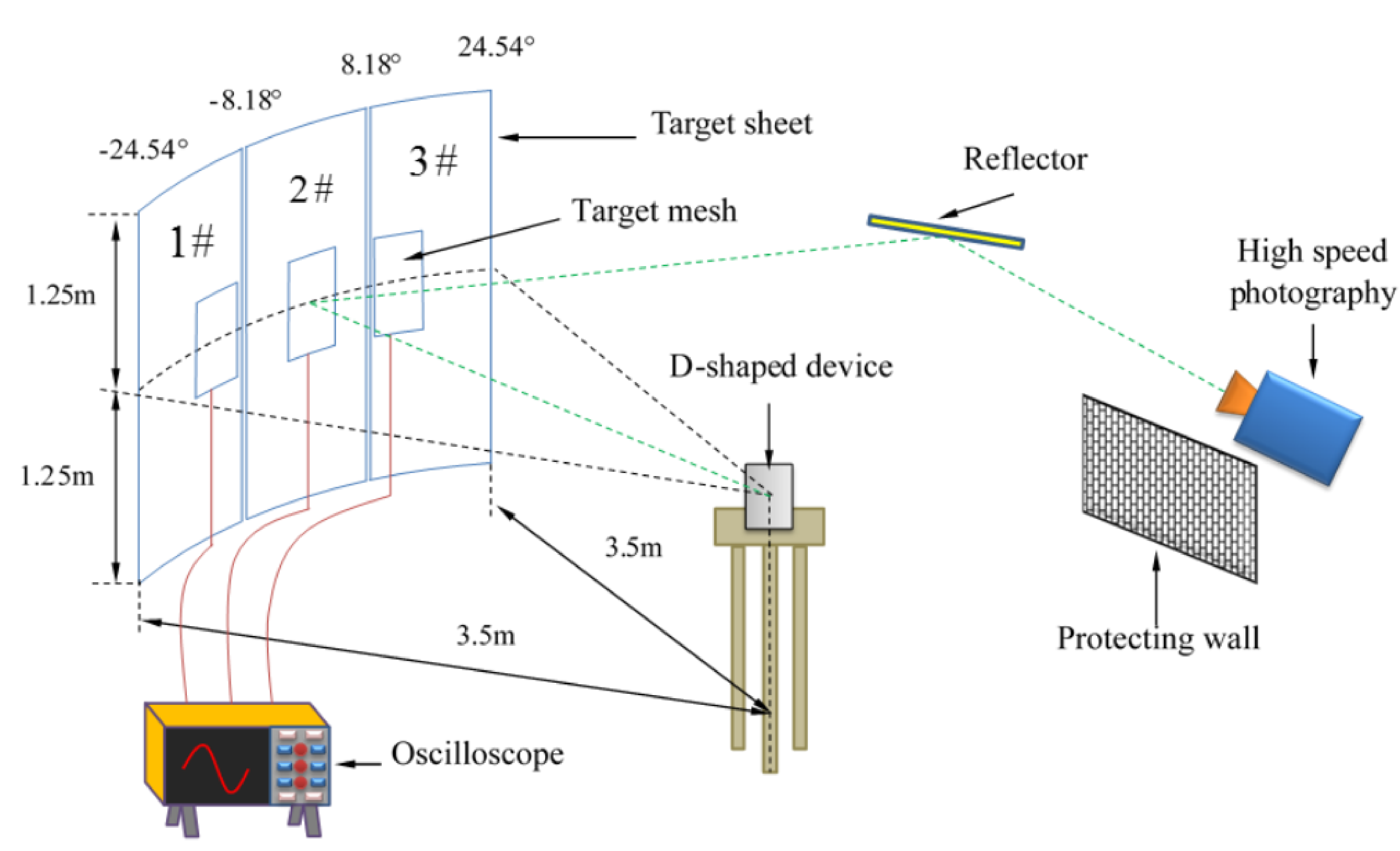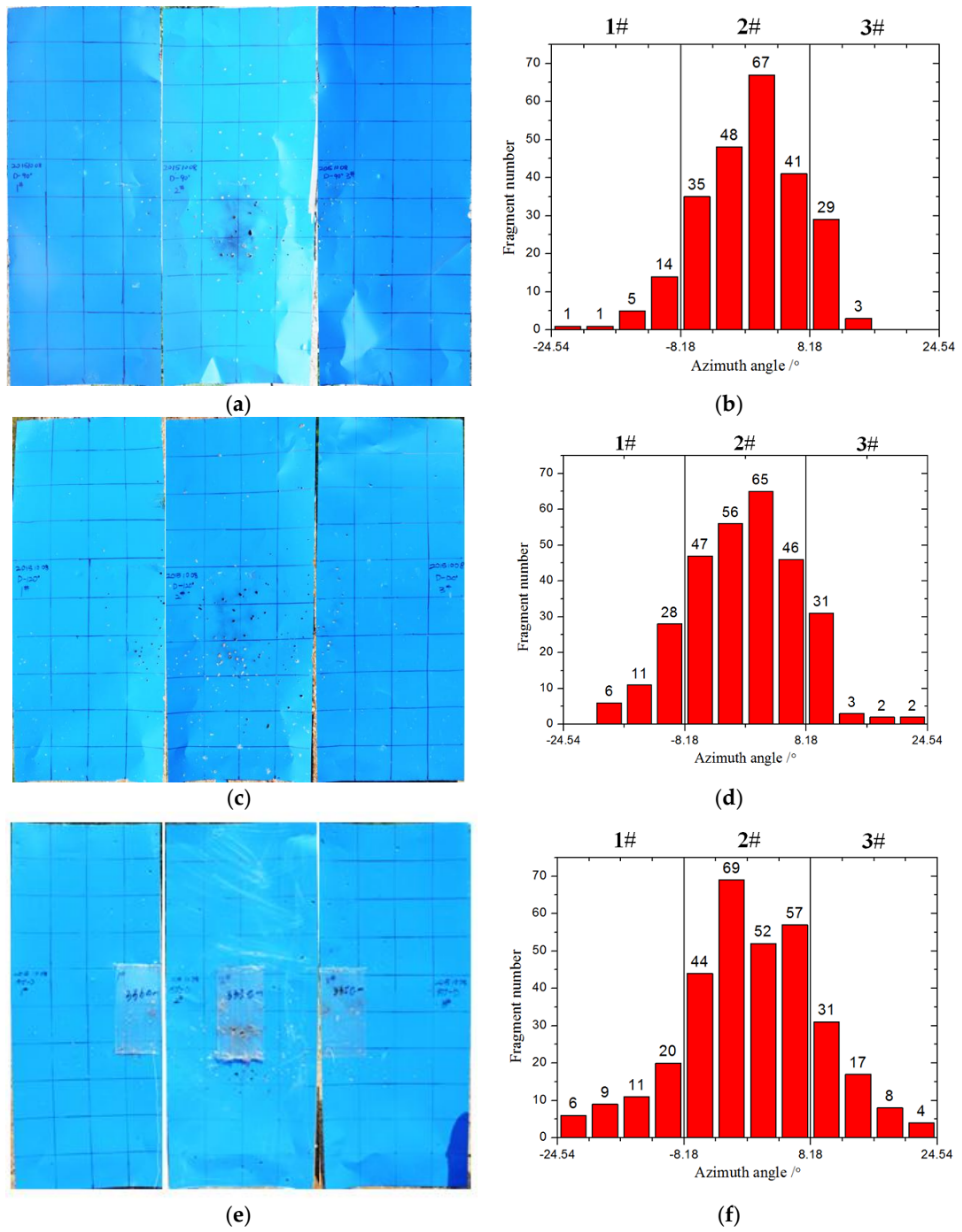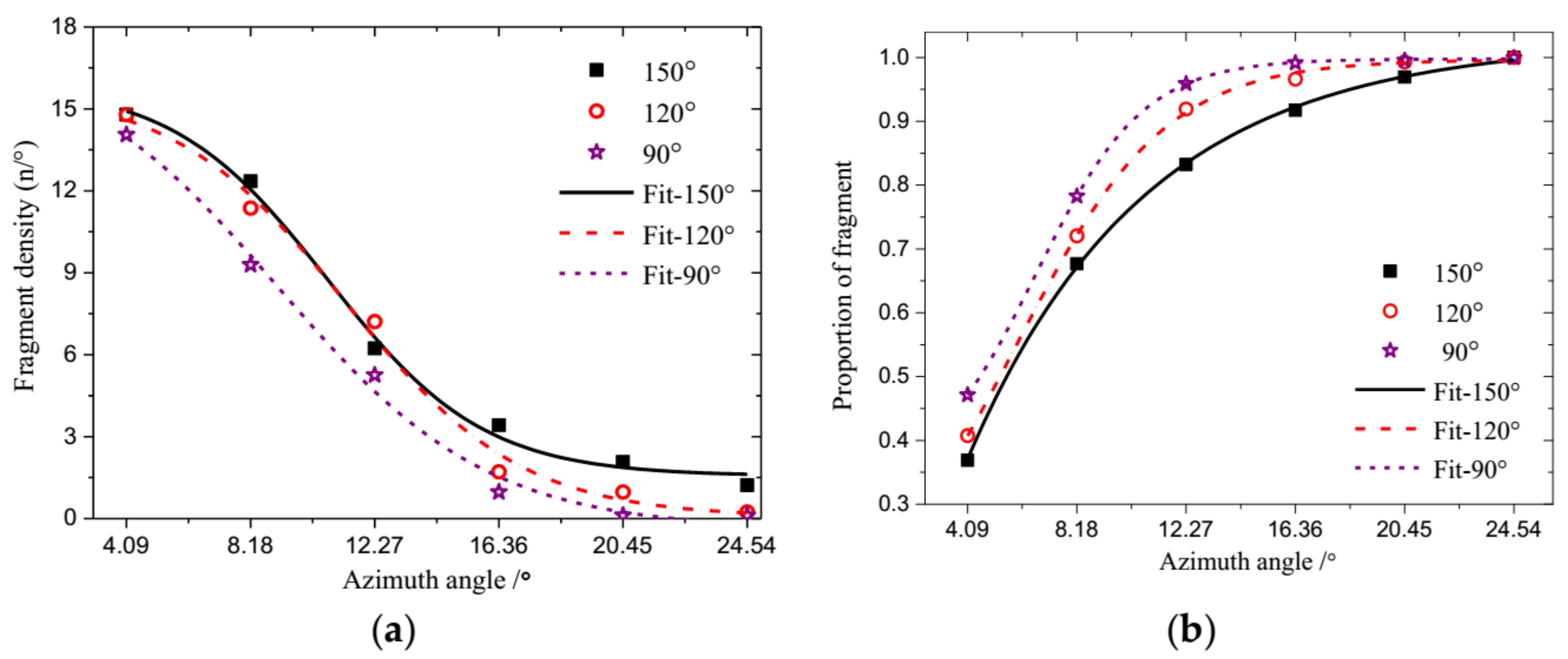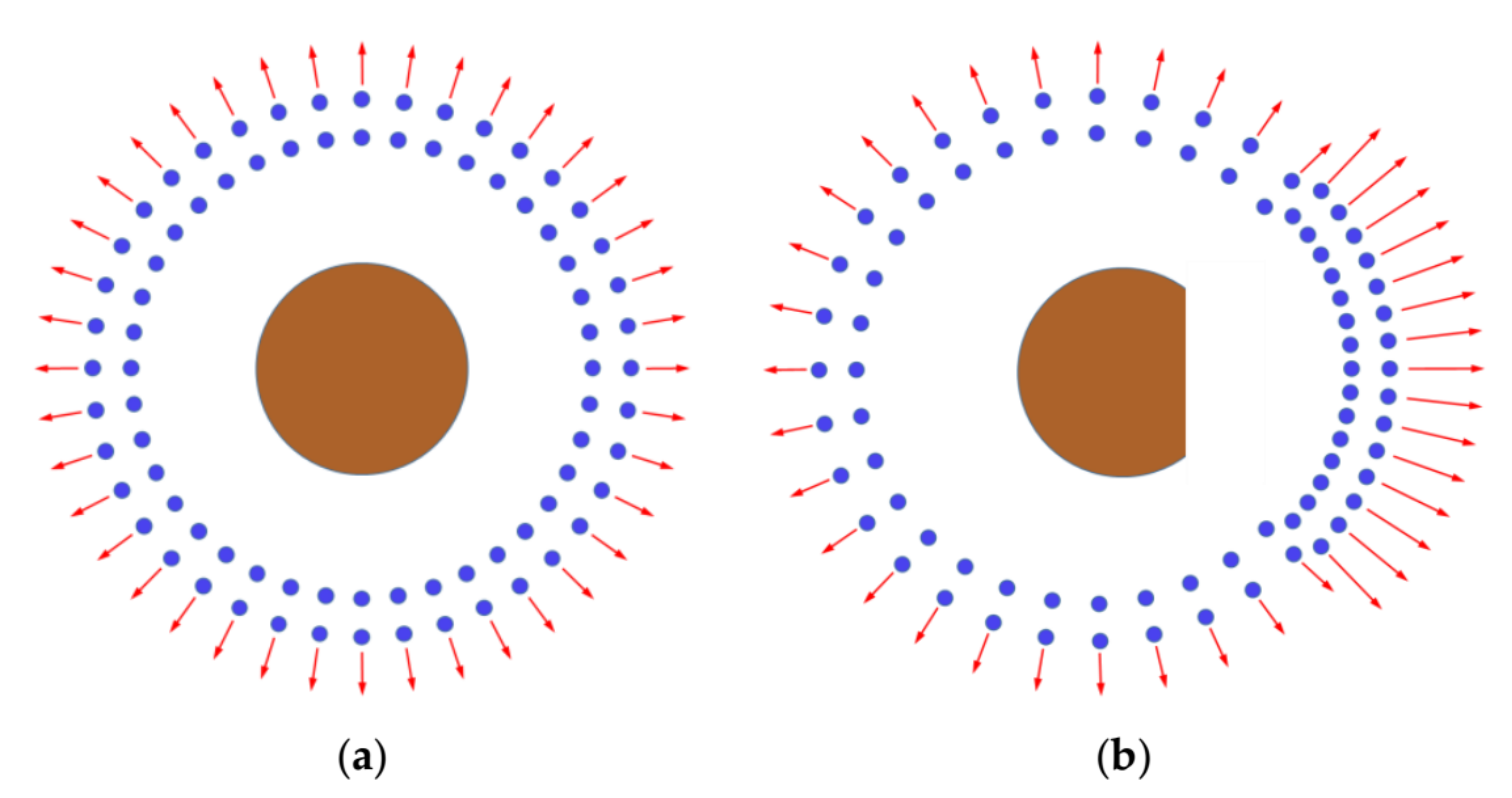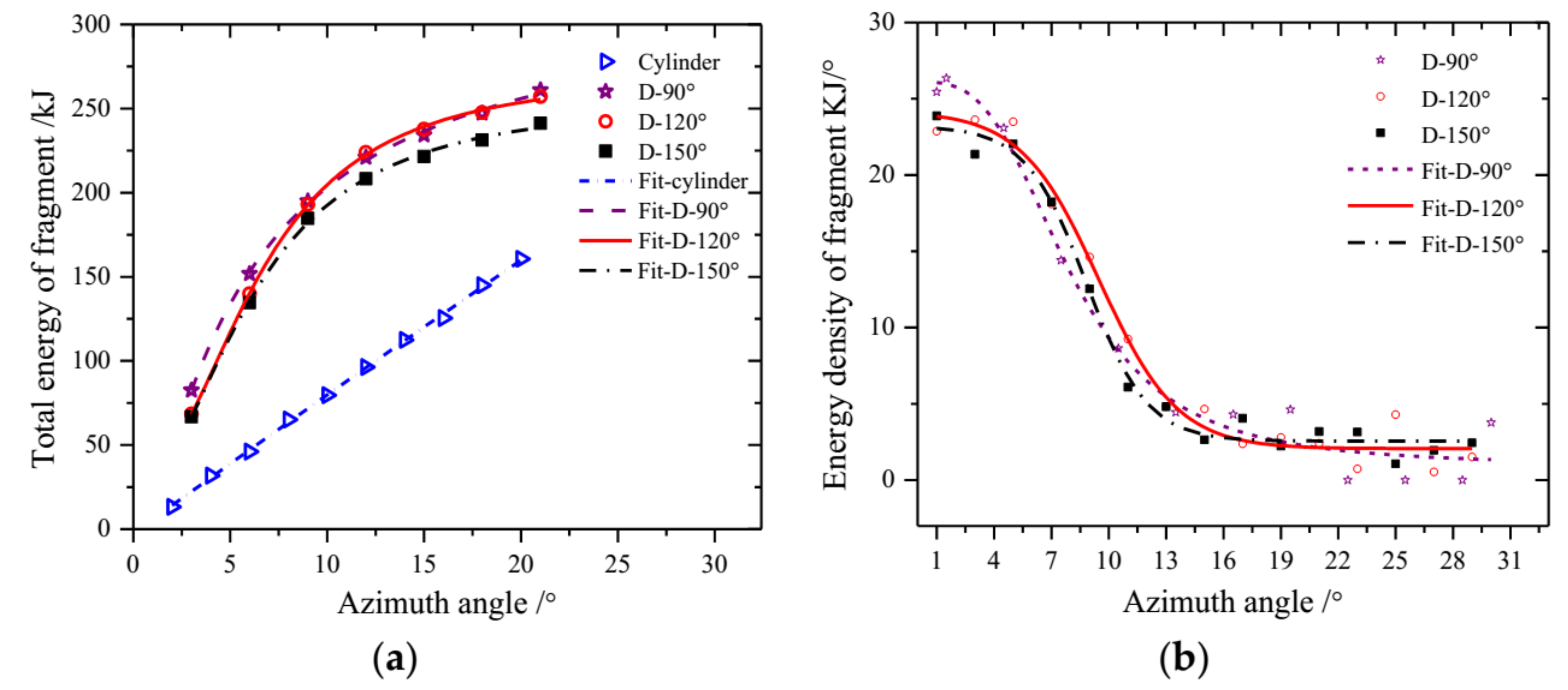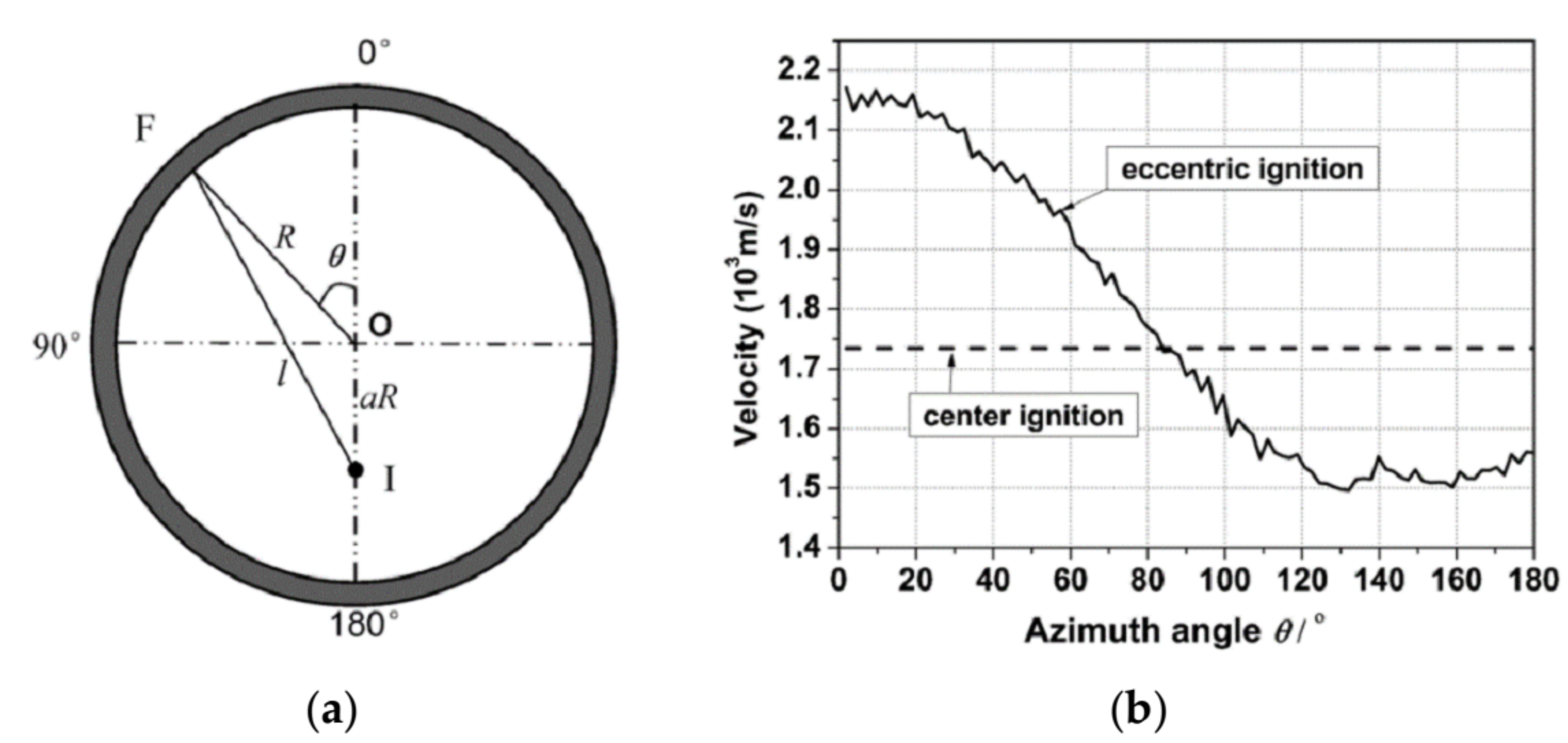Cylindrical casing is a very important and common structure in engineering applications. In the national defense industry, cylindrical casing has always been regarded for a carrier of weapons. Due to its axisymmetric structure, the fragments fly outward along the radial in a uniform distribution under internal explosion loading, which leads to poor damage efficiency in the target direction. A lot of significant research on fragment dispersion and fragment velocity distribution about the fragment generators has been reported. Wang et al. [
1] proposed a formula to quickly predict the radial velocity distribution of fragments of the Velocity Enhanced Warhead, and the correction function applied to the formula took into account the directionality and initiation characteristics of fragments. Dhote et al. [
2] carried out several experiments to study the spatial dispersion of fragments in two configurations of fragment generator warhead (FGWs), and the results showed that the projection angles had a normal distribution. Lian et al. [
3] utilized the MPM (material point method) to simulate the explosively driven metal problems, and a new correction function to the Gurney solution was put forward, which considered the lateral effects for the flat sandwich configuration. Huang et al. [
4] and Wang et al. [
5] have all researched the fragment velocity distribution of cylindrical casings under eccentric point initiation. The explosive experiments were conducted with pulsed X-ray diagnostics, and the formula derived from experimental data can achieve fast computation of fragment velocity distributions. In addition, many researchers have also tried to work on how to improve the energy output and the utilization rate of fragments. The earliest prototype of deformable cylindrical structure [
6] was reported in 1973. Held [
7] put forward a concept about the deformable cylindrical structure in 1992, which immediately received wide attention. Fairlie et al. [
8] and Racah et al. [
9] first carried out numerical analysis on the deformation of a deformable cylindrical structure and the process of fragment dispersion by using Autodyn-3D, which is widely used to simulate explosive loading [
10,
11]. Bonorchis et al. [
12,
13] studied the structural response of rectangular plates under different explosive loading conditions from the perspective of simulation, and the simulation method adopted is worth learning. The casing profile plays an important role in the design of a deformable cylindrical structure. Li et al. [
14] conducted some experiments for the deformation shape of cylindrical casing with an internal medium under lateral explosion loading. Gefken et al. [
15] studied the damage efficiency of cylindrical casing subjected to partial explosion loading by using an energy analysis method. Hoo Fatt et al. [
16] and Wierzbicki et al. [
17] reported the plastic damage effects of cylindrical casing under lateral impact loading. Yakupov [
18,
19] reported the dynamic response of cylindrical casings under a planar plastic shock wave by using the rigid plastic hinge theory.
Based on the above literature, researchers have undertaken a lot of work regarding the deformable cylindrical structure. To the best of our knowledge, there is relatively little research on the influence of the profile on the energy output. The asymmetric cylindrical structure can be roughly divided into three types: the concave-shaped, convex-shaped, and D-shaped. The research on concave-shaped and convex-shaped types has been described in another article [
20]. Therefore, this paper mainly focuses on the D-shaped structure, and several experiments were carried out to investigate the influence of the central angle on the spatial distribution, fragment velocity and energy output. The final discussions can provide guidance for the design of a D-shaped structure to achieve a higher energy output.


